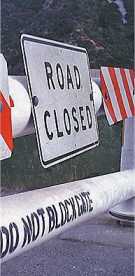The Manchester-related pictorial history of
social anthropology and of social research in Zambia is
surprisingly poorly covered at the Internet, which I why I took
the trouble to compose the present photographic essay. For
the reasons informing this particular selection of figures and
photographs, and background details, see my piece on the
Manchester School (still is Dutch, soon to be translated into
English). The illustrations below are largely available in
the public domain; they are cited for purposes of the circulation
of scholarly information, and with full references of original
provenance (clicking on a particular photograph will take you to
its original source; whether these websites are still accessible
is beyond my control). I acknowledge my indebtedness to original
copyright owners. Whenever the name of the photographer is known
to me, I have included it. This selection and captions © 2004
Wim van Binsbergen. Your comments, corrections and copyright
claims are most welcome via e-mail.
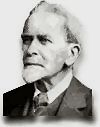
James G. Frazer, classicist and anthropologist
(1854–1941), pioneering theories of magic, of kinship,
and of sacred kingship; with his works, especially The
Golden Bough, he was the first (and only)
anthropologist to became a household word throughout the
English-speaking part of the world
|
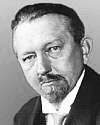
Leo Frobenius, leading German Africanist (1873-1938),
indefatigable but contentious Africa traveller, great
collector of oral literature and local forms of art, and
founder of the diffusionist school of Kulturmorphologie
(Frankfurt)
|
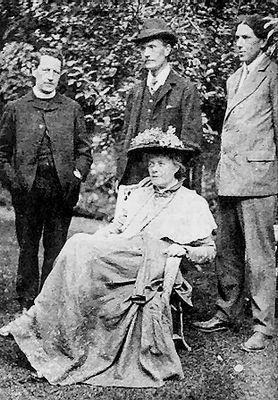
Jane Harrison, highly original interpreter of Greek
ritual, influential classicist/anthropologist
(1850-1928), amongst her classicist colleagues; left to
right: H.F. Stewart, Gilbert Murray, Francis Cornford
|
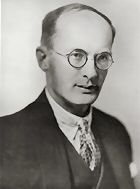
Bronislaw Malinowski (1884-1942), born in Zakopane,
southern Poland, pioneer of anthropological fieldwork,
and for many the founder of British scientific
anthropology
|
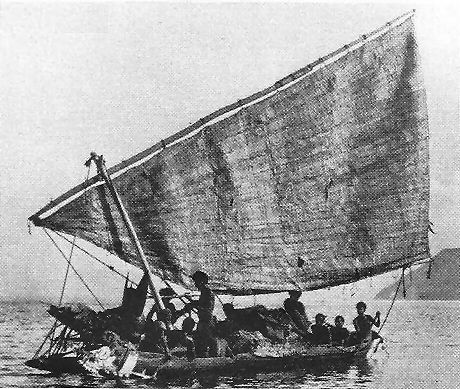
Trobriand Islanders on a sea voyage; it was during World
War I internment as a citizen of an enemy country that
Malinowski pioneered modern anthropological fieldwork
|

A.R. Radcliffe-Brown, leading theoretician of classic
British anthropology (1881 - 1955)
|

Grafton Elliot Smith (1871-1937), anatomist,
Egyptologist, and diffusionist anthropologist of the
early 20th century
|
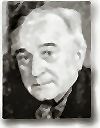
E.E. Evans-Pritchard (1902 - 1973), embodiment of the
classic British anthropology from which Manchester formed
a radical departure
|
. 
Cattle wealth among the Nuer today, southern Sudan; the
Nuer and Evans-Pritchard made each other famous
|
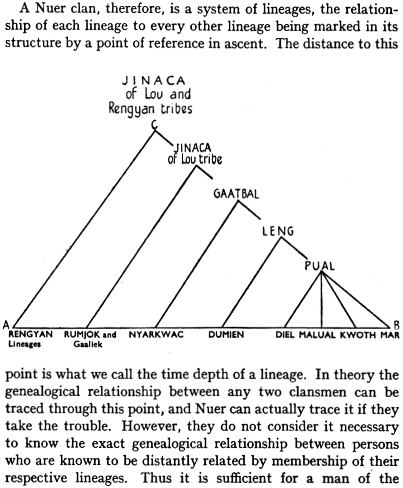 ... ...
Evans-Pritchard, The Nuer,
page 201: The Nuer was a particularly effective and
influential description, in terms of interlocking systems
of segmentation at the family, and clan level, of the
social organisation of a (before colonial conquest)
stateless society. The elegance, simplicity and
transparence of the book's modelling, enhanced by
Evans-Pritchard splendid prose style, were irresistible
but (or so the Manchester School thought) too consistent
to be true
|

E.E. Evans-Pritchard’s bust in the Tylor Library,
Oxford, United Kingdom
|

A scale model of a Tallensi homestead,
northern Ghana, where Meyer Fortes (1906-1983) conducted
fundamental fieldwork on social organisation and religion
|

Audrey Richards (1899-1984), a student of Malinowski’s,
and the first to write a fully modern ethnography of a
community in Northern Rhodesia (now Zambia): Land,
labour and diet in Northern Rhodesia (1939). |
. 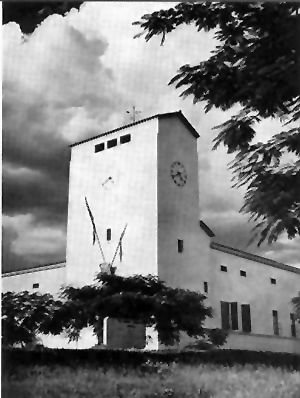
The Rhodes-Livingstone Institute was initially located in
the town of Livingstone in the far south of Northern
Rhodesia. Livingstone was the colony’s capital until
the mid-1930s, after which the seat of government was
shifted to the more centrally located Lusaka, until then
a minor railway siding. The Rhodes-Livingstone buildings
at Livingstone were to house the Rhodes-Livingstone
Museum, which today is struglling on under ever
increasing hardship
|

Monica Hunter did research among the
Pondo of South Africa, and with her husband Godfrey
Wilson she studied the Nyakyusa of southwestern
Tanganyika (now Tanzania), before the couple embarked on
a pioneering study of social relations among the urban
migrants in the central Northern Rhodesian town of Broken
Hill (now Kabwe), created immediately after the colonial
conquest (c. 1899) because of its rich resources in lead
and zinc, long before the much more rewarding copper
reserves were discovered further up north, in what was to
be the Copperbelt. The Wilson's Kabwe research resulted
in The Economics of Detribalization in Northern
Rhodesia, 2 vols (1942, so published after Godfrey
Wilson's death). Apart from Ellen Hellmann's study of the
'native slum' Rooiyard in South Africa
(subsequently to be republished as a Rhodes-Livingstone
Paper in 1948), no such study had yet been undertaken in
South Central and Southern Africa. Godfrey Wilson was
founder-director of the Rhodes-Livingstone Institute, but
soon after the outbreak of World War II he committed
suicide, allegedly because of his pacifist convictions.
This changed the course of Gluckman's life and of the
history of anthropology: Gluckman, until then a young
Ph.D. exploring Barotseland and relishing the princely
status that was accorded him there, became director of
the Rhodes-Livingstone Institute.
|

Max Gluckman (1911-1975), ca. 1970; note the signature
bottom right, sign of celebrity aspirations. On the other
hand, he appeared to be relatively modest concerning the
paradigmatic shift that the Manchester School
represented, and admitted: "A science is any
discipline in which the fool of this generation can go
beyond the point reached by the genius of the last
generation." (But, in a dialectical way rather
typical of Gluckman's thinking, this expression takes on
a totally different quality when considered from the
perspective of the generation that came after Gluckman,
and then would claim not stupidity but genius for him).
|
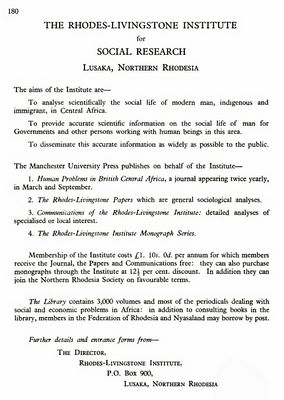
Publicity
for the Rhodes-Livingstone institute, late 1950s (click
on thumbnail to enlarge)
|

The Barotse king’s hall, Barotseland, 1940s, where Max
Gluckman did much of his Barotse fieldwork
|
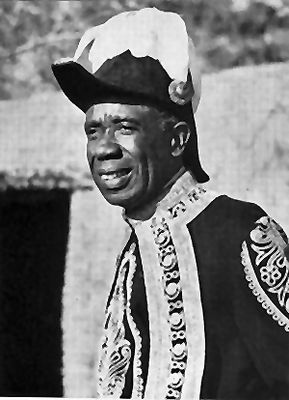
Paramount Chief Sir Mwanawina III KBE (Knight of the
British Empire) (1888- 1968) of the Barotse, dressed in
state in the admiral’s uniform which the British crown
had donated to his most famous predecessor, Lubosi
Lewanika. Mwanawina’s successor was Mwendaweli, who had
earlier served as Max Gluckman’s research assisant in
the 1940s
|
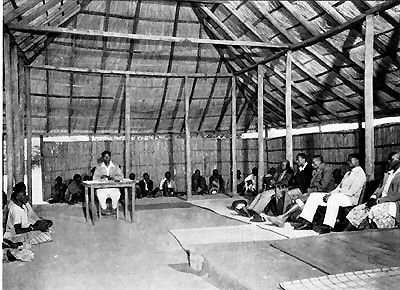
Barotse kuta (royal court) in progress, probably in the
1950s
|

Labourers from the Rand Gold Mines returning home up the
Zambezi in the 1950s. From the late 19th century onward,
temporary labour migration to the mines and commercial
farms of South Africa and Southern Rhodesia was a major
source of cash for the rural population, only partly
diverted by the emergence of mining towns on the
Copperbelt in the late 1920s. Migration, especially
circulatory labour migration, was the backbone of the
economies of South Central and Southern Africa, but no
adequate scientific approach to this phenomenon was yet
available, and Manchester School researchers (especially
Mitchell and Epstein) devoted much of their time and
energy to fill this gap, both descriptively and
theoretically.
|
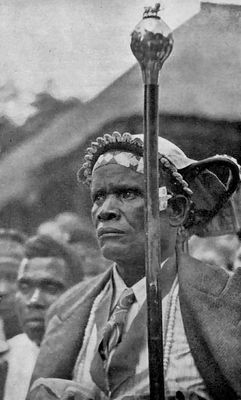
Paramount Chief Kazembe XV at Luapula, focus of Ian
Cunnison’s research around 1950; photo T. Gorecki
(unfortunately I have no details concerning this king's
dates of birth and death)
|
 Much of the strength of the
Rhodes-Livingstone Institute derived from its excellent
and diversified publication strategy, comprising four
different series (1. cyclostyled Communications; 2.
printed Papers; 3. printed books; 4. the journal Human
Problems in British Central Africa / Rhodes- Livingstone
Journal); most of these were eventually accommodated
with Manchester University Press, the Manchester School's
house publisher
|
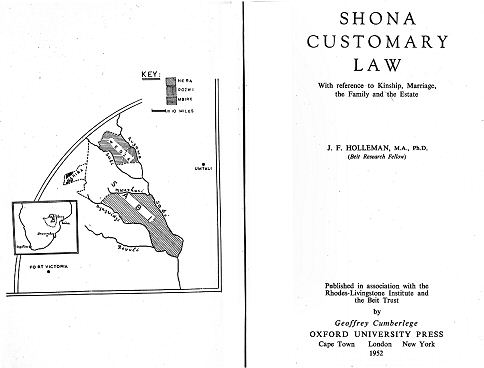 The
whole of British South Central Africa (present-day
Zambia, Zimbabwe and Malawi) was the work space of the
Rhodes-Livingstone Institute, but given Max Gluckman
junior status when he became director in the early 1940s,
the earlier anthropological research in this vast
territory was by no means controlled by Gluckman and
lacked the Manchester School touch. In Southern Rhodesia
in the 1940s, Hans Holleman, son of a Leiden professor of
Indonesian adat law, developed into one of the
most prominent students of African law with, as he
declared to me in the late 1970s, only a minimum amount
of 'rubbing shoulders with the Manchester crowd'.
|
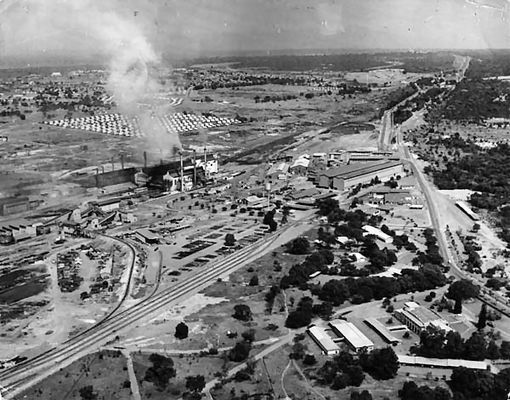
Luanshya, the most typical of the Copperbelt mining towns
which emerged in Northern Rhodesia from the late 1920s
onward
|

a map
of late colonial Northern Rhodesia from the settlers'
point of view: only places with a substantial white
population are marked, and hotels and rest camps are
specifically indicated (click on thumbnail to enlarge)
|
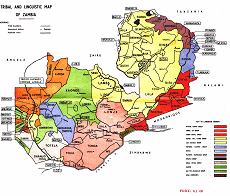 (click
to enlarge) (click
to enlarge)
For the African inhabitants of Northern
Rhodesia, a rather different map was drawn up, clearly
demarcating, and distinguishing by contrasting colours,
the various 'tribal' areas into which the territory was
administratively divided; the assumption was that these
divisions coincided with linguistic and cultural
distinctions, thus reifying (through the cbinary
opposition of ethnic names) cultural gradients that were
in fact much more continuous, in most cases.
Anthropologists used this map with the same enthusiasm as
administrators. A copy of it graced Brelsford's Tribes
of Zambia (1956, repr 1965) -- written by a colonial
administrator dabbling in ethnography (like so many of
his colleagues), but also Audrey Richard's splendid, and
deservedly classic, ethnography Land, labour, and
diet in Northern Rhodesia (1938). As the Kwacha
price tag, bottom right, indicates, the map was
uncritically reprinted in post-colonial times by the
Zambian Survey Department, the country's official
producer of maps. It formed the basis of Kashoki's map of
Zambian languages in the late 1970s. The fantasms of
colonial ethnography and administration have thus
continued to be seeded back into postcolonial popular
appropriations.
|
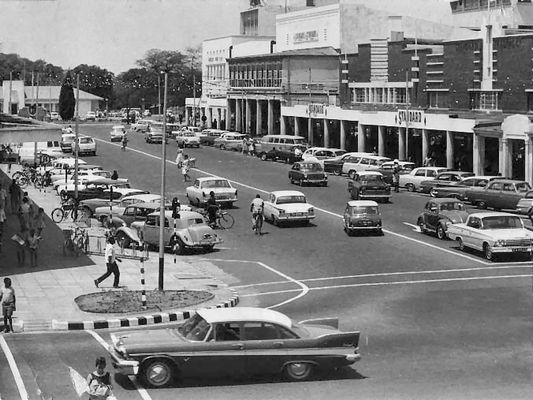
Kitwe, to develop into the main town of the Northern
Rhodesian Copperbelt, ca. 1955
|

Copperbelt dancers, 1950s. During weekends, African
miners on the Copperbelt, dressed in their Sunday best,
would perform dances reminiscent of their home areas. In
this way they articulated aspects of ethnicity and of
urban-rural relations which were to become the topic of
Clyde Mitchell’s famous essay The Kalela Dance
(1955).
|

Elizabeth Colson (centre) (1917- ), probably early 1950s,
during fieldwork among the Tonga; note the helmet
|
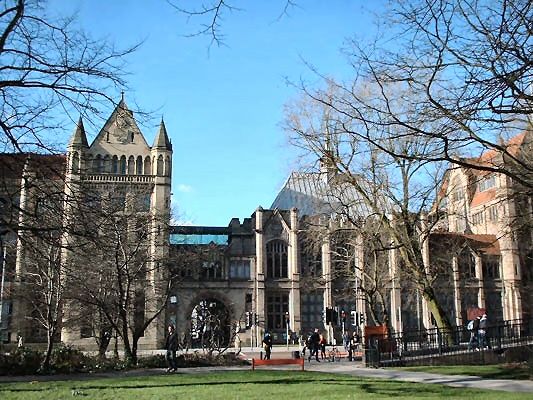
Victoria University, Manchester, where Max Gluckman was a
Professor of Anthropology from 1949 onwards; © 2000-2004
Dr. Falco Pfalzgraf
|
. 
By all accounts, Max Gluckman exercised a strong hold
over his students, disciples and junior members of staff.
Manchester School identity means that one shares in a
vast repertoire of rumours and anecdotes associated with
Gluckman's autocratic but benign leadership in the
1940s-60s. One persistent rumour is that he forced
everyone to support Manchester United, the major local
soccer club. Watching their life performances in the
stadium, or failing which, their appearances on
television, is alleged to have been compulsory for
Manchester School members when ‘home’; ©
www.webaviation
|
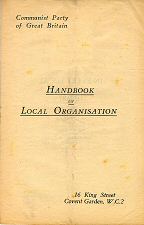 (click for enlargement) (click for enlargement)
Another persistent rumour is that Max
Gluckman persuaded his followers to be card-carrying
members of the Communist Party of Great Britain.
Considering the (from our present point of view) almost
inconceivably exploitative and racialist labour
conditions to which African workers were subjected in
Northern Rhodesia and throughout the Federation of
Rhodesia and Nyasaland, and also considering the
courageous solidary stance which most Manchester School
members adopted vis-a-vis their African hosts, friends
and junior colleagues in research, communism may well
have been the only option of integrity available. At the
same time Europe was in the throes of Cold War demagogy,
so this option was not chosen lightly, as several
Manchester School researchers were to experience in their
personal and political careers.
|
 Lord Simon of Wythenshawe, Sir Ernest Emil
Darwin Simon, 1879-1960. After working in the family
engineering business Ernest Simon became a Liberal MP in
1923. He joined the Labour Party in 1946 and was a
founder of New Statesman magazine. In 1947, the
Labour Government gave him a peerage and appointed him
BBC Chairman. A respected authority on post-war
Britain’s rebuilding, he always kept close connections
with Manchester and his family business. He chaired
Manchester City Council until 1957. At the University of
Manchester, visiting fellowships and a professorship were
endowed in his name; the incumbents were housed in the
Simon residence near Victoria University, Manchester, and
attended on by what remained of Lord Simon's former
domestic staff. In the heyday of the Manchester School,
several of its members were incumbents of the Simon
Professorship, includingVictor Turner and Jack Simons
(the South African legal sociologist and freedom
fighter). In 1979-1980 I also had that honour.
|
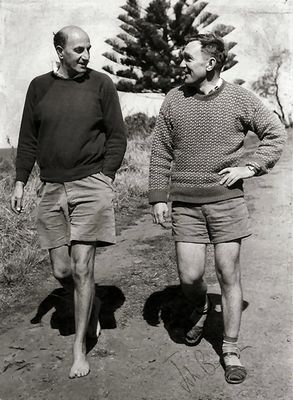
Max Gluckman and John Barnes (1918 - ) at Canberra
University, Australia, 1960; note the signature bottom
right – again, these were scholars consciously aspiring
to celebrity status; but also note Gluckman's bare feet.
Initially investigating the political organisation of the
Ngoni (a Nguni offshoot which the mfecane
upheaval in early 19th c. CE Southern Africa propelled
far up north), Barnes was later to pioneer network
analysis. Remarkable is his piece 'African models in the
New Guinea highlands' (Man 1962), which explores
the applicability of Africa-based segmentary model of
social organisation to Oceania.
|

Max Gluckman (left) at a party at home, 1959. To the
right is Richard Werbner, then a most promising student
aged c. 22; later he was to marry Gluckman’s
brother’s daughter Pnina Gilon, born and bred in Israel
since that is where her father settled from South Africa.
This marriage reinforced Werbner’s role as keeper of
the Manchester School inheritance after Gluckman's demise
in 1975. The person in the middle is Maurice Ginsburg,
without obvious connection with the Manchester School.
|

Sigmund Freud (1856 - 1939), founder of
psychoanalysis, in his Vienna study. Concentrating on the
small-scale social process at the level of the village
and the urban ward, mainly in Africa, the Manchester
School never had much of a discourse on the hidden,
subconscious drives in human behaviour. Instead it
emphasised the explanatory value of agency: the
individual actor's conscious strategies of manipulating
social norms and inchoate structures on the basis of the
preceding historicity (the unique and unpredictable,
accumulative unfolding) of the social process. However,
psychoanalysis (albeit not by Freud of course, who had
died in London before Gluckman ever set foot in
Barotseland) was alleged yet to play a role at Manchester
as an uninvited guest: as the intended remedy for
Gluckman's profound midlife and leadership crises. Rumour
(that is, my interview with Jaap van Velsen, Manchester,
April 1976) has it that Gluckman's remarkable book
production in the late 1950-mid 1960s had much to do with
the need to pay his therapist's bills; not unlike the isanusi
or isangoma diviners at a Zulu king's court (the
setting of Gluckman's Ph.D. research), those involved
attributed to this therapist disproportionate influence
over the affairs of the anthropology department.
|
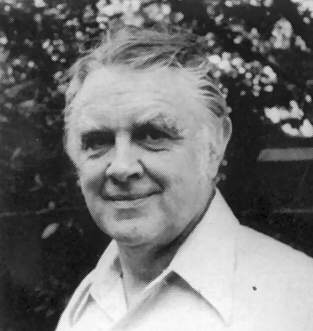
Victor Turner (1920-1983), the one Manchester figure who
strayed furthest from the Manchester path, and in the
process gained world fame with his lasting contributions
to religious studies. A persistent Manchester rumour
interprets Turner's first major book, Schism and
continuity in an African society (1957), as a key
novel echoeing the struggles for leadership and
recognition, 'order and rebellion' (the title of one of
Gluckman's books), that constituted the Manchester
School.
|
 |
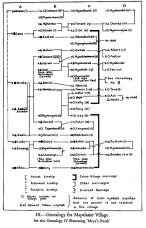 |
(click
on thumbnails to enlarge)
The most detailed and
convincing example of the Manchester School
approach to rural communities in South Central
Africa was Jaap van Velsen's The politics of
kinship (1964, based on his 1957 Ph.D.),
dealing with Tonga villages in Nyasaland (now
Malawi). The book is classic ethnography in its
methodology of taking the combination of a
village map and a genealogy (as shown here) as
essential point of departure for social analysis.
However, the book demonstrates that it is not
corporate group interests and fixed norms, but
momentary concerns and strategies in an ongoing
social process, which determine the shape and
outcome of conflicts; what makes Central African
villages tick, is not a kinship-centred culture
('custom'), but local-level politics
within the kinship realm. The preface of the book
was written not by Gluckman but by Clyde
Mitchell, not only as the Malawi specialist, but
also as someone who probably contributed as much
to the success of Manchester as Gluckman did
himself. Mitchell was the intelligent, modest,
socially skilful, patient lieutenant who could
negotiate, much better than Gluckman himself,
between local ethnographic facts, complex and
diverse methodological requirements (including
numerical ones), and conflictive and exuberant
researcher personalities, like Jaap van Velsen's.
The latter was a Dutchman with an Indonesian
background, whose justified disgust with Dutch
colonial politics (especially the violent
'Politional Actions', after WW II) had made him
turn to Great Britain. The politics of
kinship was his first and last book, and its
writing was agony; not only because of oppressive
power relations and bizarre personality clashes,
but also because the book was at the same
time the culmination and the swan's song of
Manchester rural ethnography -- bringing out
beyond repair the limitations of its paradigm, especially
its extreme conception of the social process as a
drama confined to a strictly local theatre.
Characteristic of this agony was that van Velsen
felt compelled to excise, from the book's very
galley proofs, an entire chapter on labour
migration, which (with that amount of empirical
detail, and in the organic context of the overall
ethnographic argument on Tonga society) was never
to appear in print elsewhere. Yet it was a unique
opportunity to show how the social drama in the
Tonga villages reflected much wider structural
arrangements in the political economy of South
Central Africa, and of the world at large,
regardless of whether the villagers were
conscious of such arrangements, and made them
part of their conscious maximalisation
strategies.
|
|
 While
for the analysis of rural settings in South Central
Africa the Manchester School relied on the notion of an
inchoate social structure full of contradictions and
options, gradually emerging in the social process and
best visible in conflict situations, for urban settings
the pioneering Copperbelt studies of Epstein and Mitchell
began to stress the model of the social network between
individuals. Here we see Bruce Kapferer's inticate model
of the network informing an workshop conflict in Zambia,
described in Mitchell's seminal collection on urban
networks (1969)
|

Andre Kobben (1925- ), focal point of classic cultural
anthropology in the Netherlands in the 1950s to early
1970s, here depicted in 2004, at the age of 79, still
going strong. Although his own fieldwork (Ivory Coast,
Surinam), his theoretical passions (cross-cultural
comparison) and his international network in the North
Atlantic (mainly USA and Oxford) put him at considerable
distance from Manchester in his own work, he successfully
mediated the Manchester School influence to his main
students. From the mid-1970s onwards, he has concentrated
on North Atlantic sociology, methodology and the
philosophy of the social sciences, and has been less of a
leading force in Dutch anthropology
|
